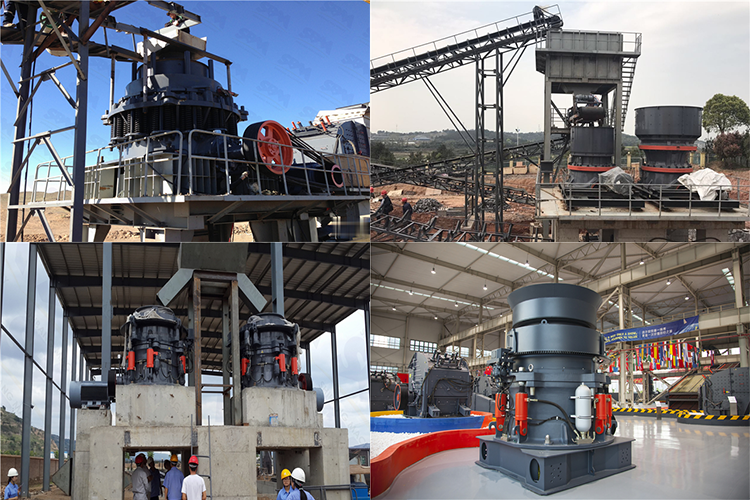
Cone crushing and horizontal bar hydraulic cone crushing are two common methods of crushing rocks and other materials. While both methods involve the use of a cone-shaped crushing component, there are some significant differences between them. In this essay, we will explore these differences and discuss the advantages and disadvantages of each method.
Cone crushing is a method of crushing materials using a cone-shaped crushing component. This crushing component is typically made of steel or another durable material and is designed to crush rocks and other materials into smaller pieces. The cone-shaped component is positioned inside a hollow chamber or bowl, which is lined with a wear-resistant material such as manganese steel. The material to be crushed is fed into the chamber through a feed chute and is crushed between the mantle and the concave.
In contrast, horizontal bar hydraulic cone crushing involves the use of a horizontal bar-shaped crushing component. This component is also made of steel or another durable material and is designed to crush materials into smaller pieces. The horizontal bar is positioned inside a chamber or bowl, similar to cone crushing, but is typically oriented horizontally rather than vertically. The material to be crushed is fed into the chamber through a feed chute and is crushed between the horizontal bar and the chamber walls.
One of the main advantages of cone crushing is its versatility. Cone crushers can be used for a wide range of materials, including hard and abrasive rocks, as well as softer materials like limestone and dolomite. Additionally, cone crushers are often more efficient than horizontal bar crushers, as they can crush materials more finely and with less energy.
However, cone crushers also have some disadvantages. For example, they are often more expensive to purchase and maintain than horizontal bar crushers. Additionally, cone crushers can be prone to wear and tear, particularly in high-impact applications, which can lead to increased downtime and maintenance costs.
Horizontal bar hydraulic cone crushing also has its advantages and disadvantages. One of the main advantages is its simplicity. Horizontal bar crushers are typically easier to operate and maintain than cone crushers, which can make them a more cost-effective option for some applications. Additionally, horizontal bar crushers are often better suited to handling larger and more abrasive materials, which can make them a better choice for some applications.
However, horizontal bar crushers also have some disadvantages. For example, they are often less versatile than cone crushers, as they are typically better suited to specific types of materials. Additionally, horizontal bar crushers may not be as efficient as cone crushers, particularly when it comes to crushing softer materials.
In conclusion, both cone crushing and horizontal bar hydraulic cone crushing are viable methods of crushing rocks and other materials. Each method has its advantages and disadvantages, and the best option will depend on the specific application and materials being crushed. Ultimately, the key is to choose the method that is most efficient, cost-effective, and reliable for the particular application at hand.